Which country has the best coffee beans? The Story of African Coffee beans the flavor characteristics of African coffee
Professional coffee knowledge exchange more coffee bean information please follow the coffee workshop (Wechat official account cafe_style)
When it comes to Africa, Qianjie believes that experienced coffee fans must know that the origin of coffee is Ethiopia in Africa!
Since Africa is the birthplace of coffee, then the quality and flavor must be the most primitive.
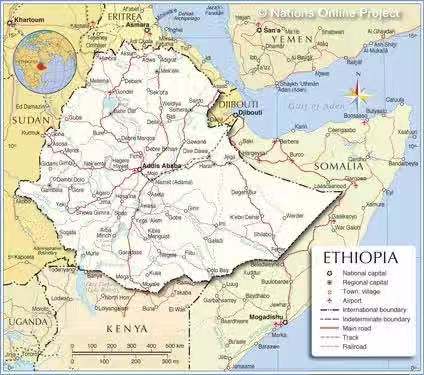
When it comes to the flavor of coffee, Qianjie thinks of its unique fragrance of flowers and fruit. Ethiopian coffee has a strong orange flavor, while Kenya coffee has strong raspberry aromas, sour aromas of black plum juice and grapefruit, and sweet sugarcane aromas. The orange aroma of Essel coffee and the raspberry flavor of Kenyan coffee are the most distinctive features of African beans, and they are also the most attractive to coffee fans.
The common feature of African coffee is Qianjie, which is thought to be full-bodied aroma and charming acidity, and its sour taste is lively and bright.
However, the mellow African coffee is often a little thin, sweet taste is not very prominent. This is because African coffee is long-term drought and lack of water, so most of them use the sun method to treat raw beans, so the bean shape is often uneven and beautiful, and the defect rate is high.
The following front street would like to talk to coffee fans about the major coffee-producing countries on the African continent.
1. Ethiopia
Coffee has been integrated into the social structure and cultural economy of Ethiopia for hundreds of years. Coffee is the core of their culture and an important source of income for most people. The country is also recognized by the world as the birthplace of coffee, highly respected in the boutique coffee market, almost all coffee shops around the world have Ethiopian coffee on the menu, and Qianjie coffee is no exception. But why Ethiopian coffee is so well received. Qianjie Coffee believes that there are great differences between each producing area in Ethiopia, but no matter which producing area, as long as it is Ethiopian Arabica coffee, many people can't stop. Qianjie Coffee takes you to see the origin of this coffee.
Ethiopia has three main areas where African coffee beans are produced: Harrar,Ghimbi and Sidamo, or Yirgacheffe. Harald beans come from small farms and are processed by dry processing. They are marked "longberry" for large and "shortberry" for small or Mocha (their size is peaberry).
Ethiopia's coffee cultivation is mainly in the western and southern region, and small farmers account for 90% of the total. Nearly 1.2 million of small farmers make a living by growing coffee, with an average planting area of less than 4 hectares, an average altitude of 1000-2300 meters, a planting density of 1000-1800 coffee trees per hectare, and a yield of nearly 600kg per hectare.
The main producing areas of Ethiopia are Yegashafi, Sidamo, Punga Forest, Lekanti, Ken Bata, Irubab, Hara, Lim. Yegashafi is a small town in Ethiopia and one of the highest coffee producing areas in the world, with an elevation of 1700-2100 meters above sea level. It is foggy all the year round, with a gentle breeze and cool and humid air. During the harvest season, the Ethiopian Coffee Trading Company will go to town to buy coffee beans collected by farmers and eventually sell them under the brand name "Yega Xuefei". In order to pursue high-quality fruit, implement the "Red Cherry Program", picking 100% all-red fruit by hand, so that coffee farmers pay more attention to the process of selecting beans, and the price of these coffee is relatively high.
Among them, there are several planting patterns in Ethiopia, and the following are known in Qianjie:
Forest coffee forest coffee (8-10%), coffee trees and other crops coexist in the primeval forest, without any manual care, farmers will pick coffee fruits regularly
Forest-semi-forest coffee semi-forest coffee (30-35%). The planting area of coffee trees is between the forest and the living areas of farmers. Coffee trees, like forest coffee, are naturally produced. Farmers will manage coffee planting areas and plant other cash crops.
Rural coffee garden coffee (50-55%). Coffee trees are planted around farmers' living areas, and most of them are grown by farmers themselves.
Plantation coffee plantation coffee (5-6%), large private grower, with more processing facilities and production capacity
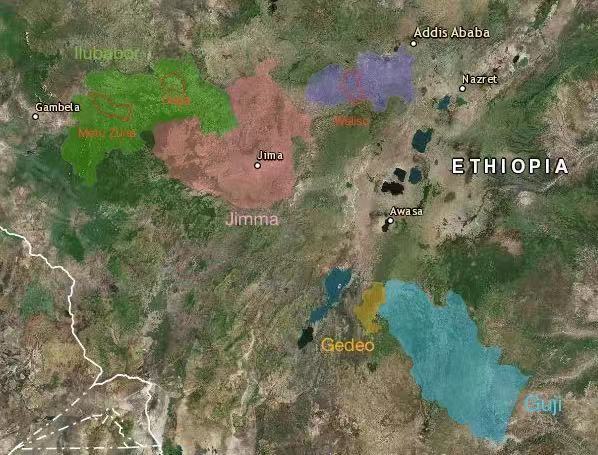
According to Qianjie, Ethiopia's coffee cherry varieties are also very rich, there are nearly 2000 varieties recorded (including 1927 native varieties, 128 exotic introduced varieties)
If you look at the bean type, Ethiopia's coffee variety is "Grand View Garden", which has everything, long, short, thin, fat...
Long particles are found in coffee growing areas all over Ethiopia. From the actual proportion, Jimma, including Limmu and Kaffa, in the west will have more long particles, and Sidama or yirgacheffe will have less proportion.
Small-particle species, round in appearance, small in bean body, mostly between 14-15 mesh, this variety should be the most familiar to us, they can often be seen in Sidama and Yirgacheffe, Qianjie has also been seen in a harrar sample, also seen in Jimma local coffee raw beans, compared with other areas, Sidama and Yigracheffe and surrounding arsi, guji have more of this small-particle native varieties planted
Ethiopia's main treatment methods are sun and water washing, as well as red honey, the following front street will introduce the impact of different treatment methods on flavor.
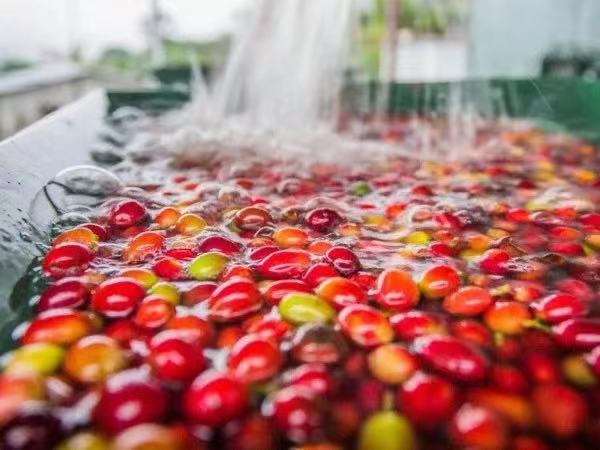
Solarization: solarization is the most traditional treatment method. Due to the special drought in Harrar area, there is no water source for washing, so it is all produced for tanning treatment. Sidama, Yirgacheffee and Guji,Jimma are also produced in other areas.
Flavor: citrus fruits, similar to lemons, oranges, oranges, grapefruit, sweet pomelo, the flavor strength from the more obvious citrus fruit (peel) aroma, to different strength of acidity, from soft small oranges, to medium strength oranges, and then to the more refreshing acidity of lemon and grapefruit.
Washing: compared with the sun treatment equipment, water resources, treatment plant environment has higher requirements, but also more stable mass production of high-quality coffee, except for Harrar, all the producing areas have water washing treatment.
Flavor: ripe fruit aromas, such as apricots, peaches, cherries, strawberries, cranberries (dried), blueberries (dried), plums, etc., accompanied by varying degrees of wine aromas, such as rum, whisky and even red wine.
Honey treatment: items marked as Kochere honey treatment have been seen on the market in the past two years.
Flavor: obvious flower aroma, delicate taste and long fruit juice. Red pomelo, citrus, sugar cane, honey, clean and soft flavor.
The following are the types and characteristics of Ethiopian coffee in Qianjie.
Qianjie Esseye plus Chevy Red Cherry
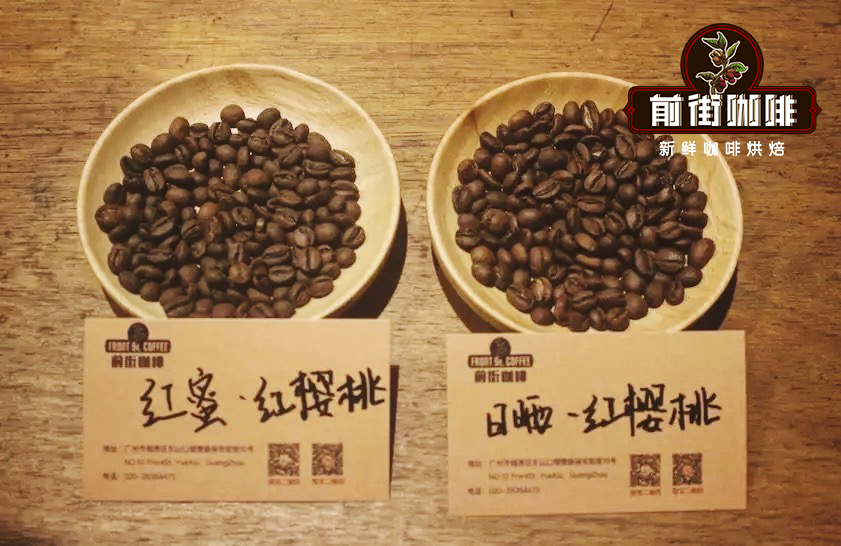
Country: Ethiopia
Producing area: Yega Xuefei
Altitude: 2000-2200m
Variety: local native clock
Treatment: red honey treatment
Flavor: Jasmine, citrus, honey, berries, almonds, fermented red wine
In fact, the so-called honey treatment refers to the process of making raw beans with mucous membrane for sun-drying. After the outer pulp of the coffee bean is removed, there will be a layer of sticky jelly. The traditional washing method washes it away with clean water, but this direct drying method has been born because of the limitations of water resources in some high-altitude areas.
Pectin mucous membrane is the part with the highest content of coffee fructose, and it is also an important part of coffee fermentation. It can be said that 80% of this part determines the supply of nutrients in the process. Yellow honey retains 60% pectin, red honey retains 75% pectin, and black honey hardly removes pectin.
Therefore, Qianjie Coffee thinks that the coffee beans treated with red honey will smell like ripe fruit and have a slight fermented taste of red wine.
In front of the street, the cherries are red in the sun.
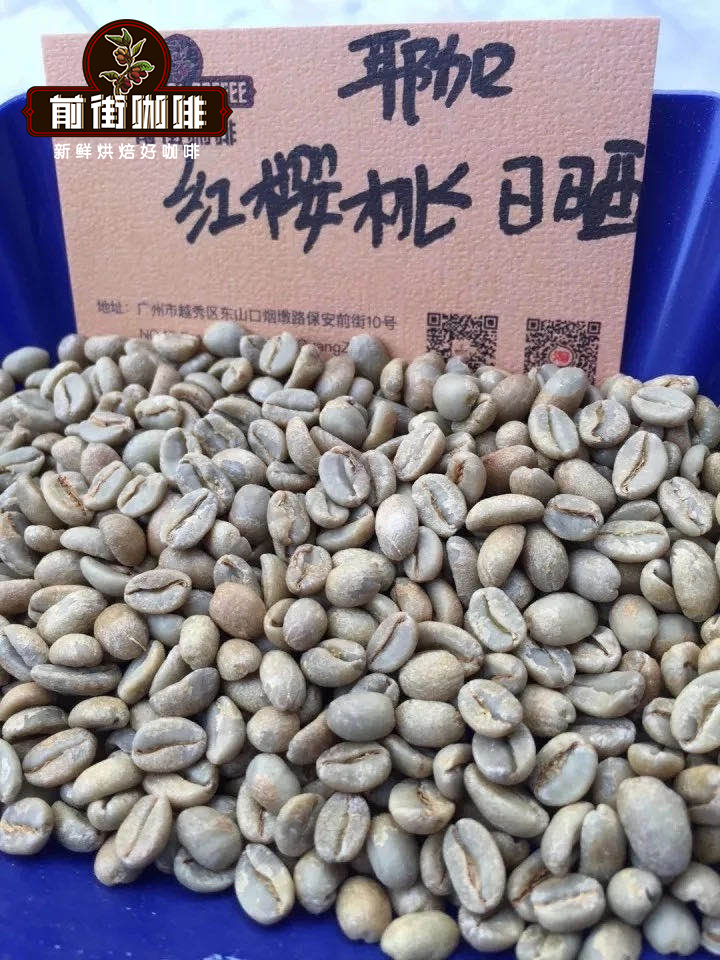
Country: Ethiopia
Producing area: Yega Xuefei
Altitude: 2300m
Variety: native species
Treatment: sun treatment
Flavor: berries, lemons, strawberries, fermented wine
Sun treatment is the oldest and most primitive treatment of coffee beans. The red cherry in the sun in the front street will put the whole coffee cherry with intact pulp and skin in the elevated shed for sun treatment to isolate contact with the ground and prevent the soil odor caused by direct exposure. After more than two weeks of sun exposure, store the dark brown coffee fruit and wait for the whole flavor to be ripe. Before shipment, the processing plant will take out the coffee beans from the coffee cherries. After this kind of sun treatment, the bean has low acidity, obvious sweetness and alcohol thickness, but its cleanliness is not as high as that of washing treatment.
Front street Esseguodintin
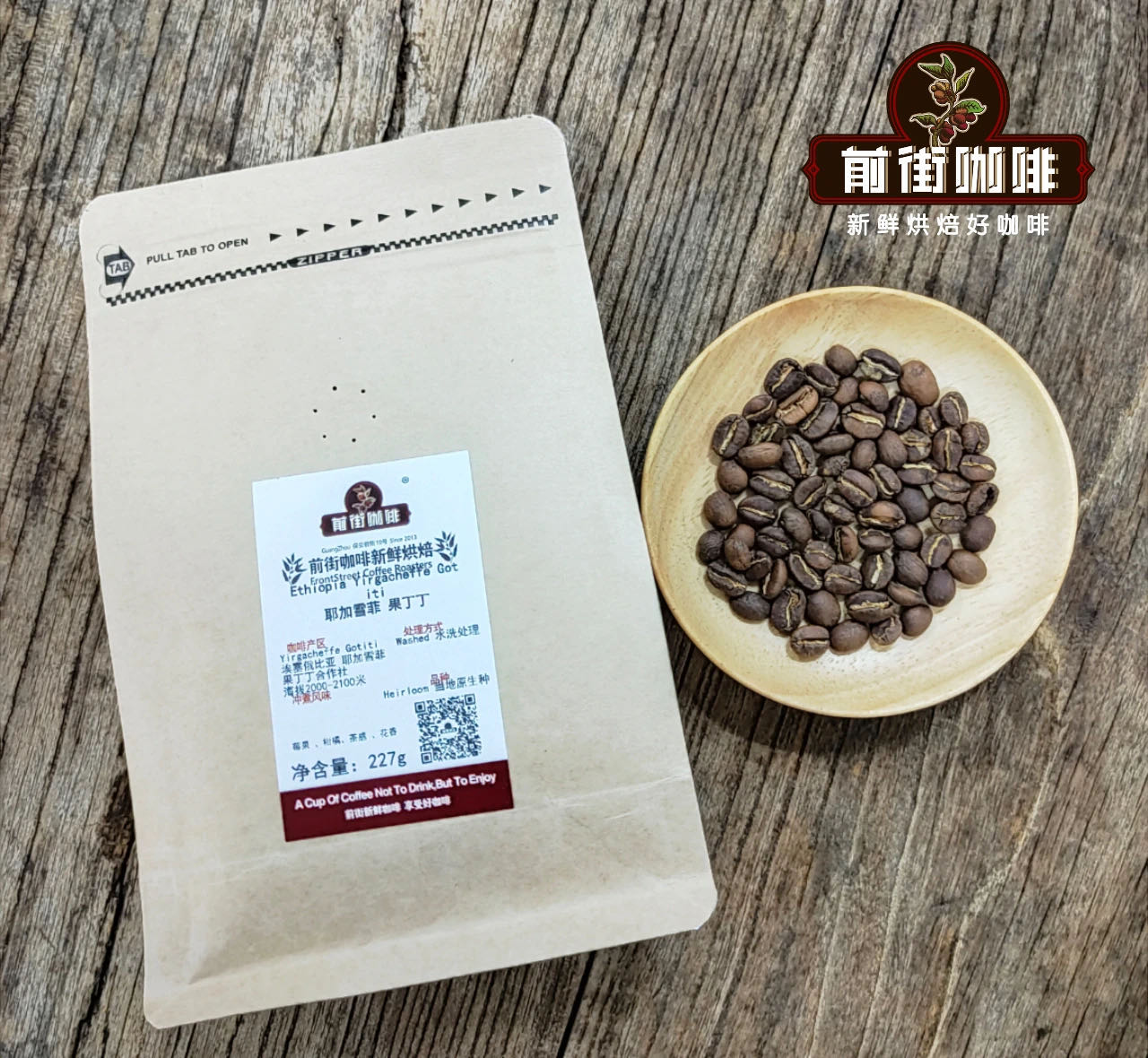
Country: Ethiopia
Producing area: Yega Xuefei
Altitude: 1900-2300m
Variety: native species
Treatment: washing treatment
Flavors: tropical fruits, cream, honey, berries, citrus
The origin of the name is actually because this coffee cherry is produced by the Guotintin Cooperative. According to Qianjie, the Guotintin Cooperative was originally part of the Waka Cooperative of the YCFCU of the Yega Sheffield Alliance. It became the Guotingding Cooperative in 2012 and now has more than 300 small farmer members.
Guodingding Village was the first independent village area, and many small farmers were also members of the Waka Cooperative, so the technology of producing coffee was not to mention. Guodingding Cooperative is known as the last piece of pure land of Yejia Xuefei, so the raw bean treatment is also a very traditional treatment (water washing and sun treatment).
Front Street Essekochel (kochere)
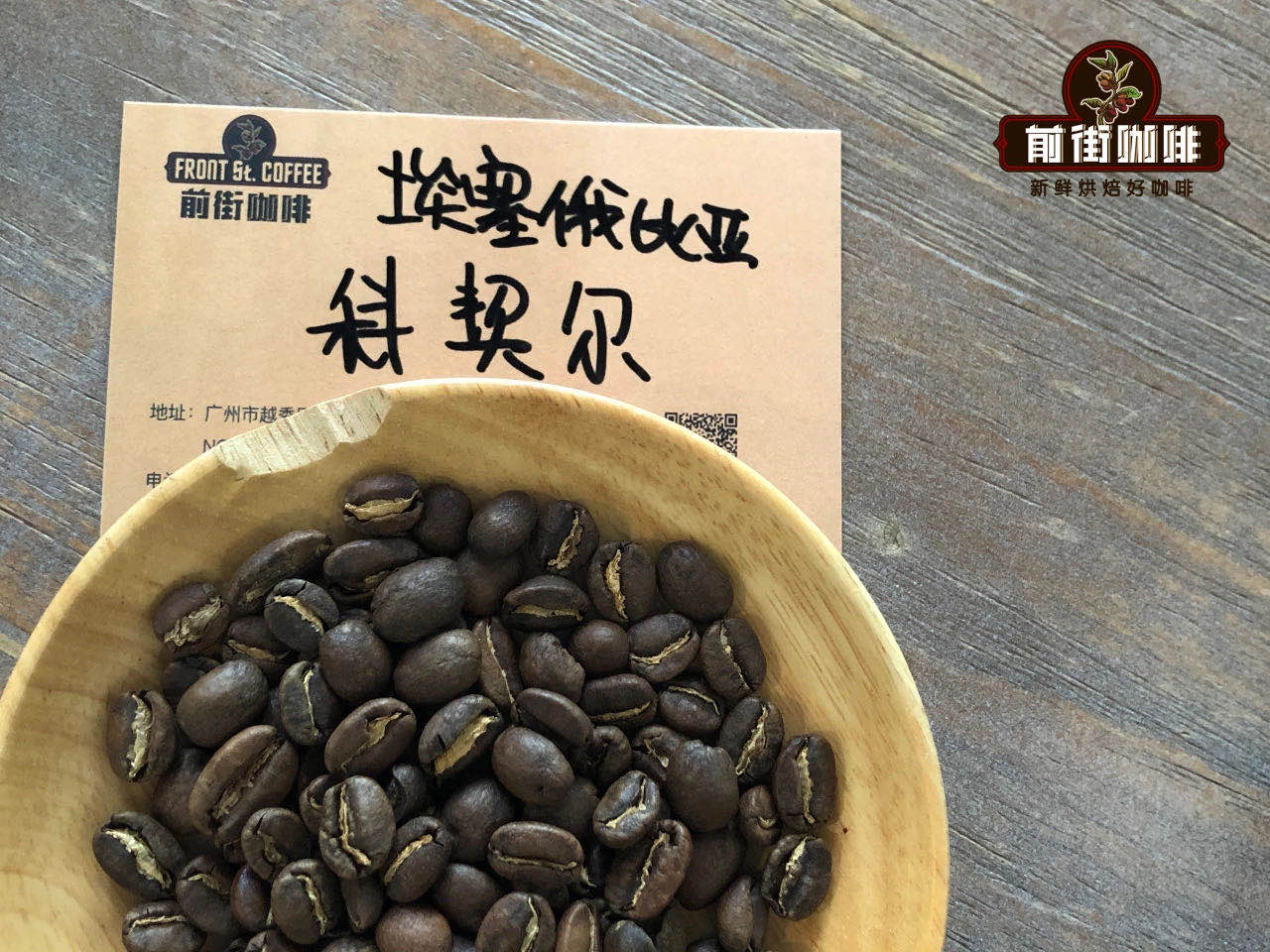
Country: Ethiopia
Producing area: Yega Xuefei
Altitude: 2000m
Variety: Kochel
Treatment: washing treatment
Flavor: Jasmine, lemon, bergamot, honey, black tea
Cochel is located in a small producing area 25 kilometers southeast of Yegashafi, Ethiopia. It is rich because of coffee production. It is also one of the three famous and micro-producing areas of Yegashafi. It has a local population of about 100,000 people, and coffee beans are the main source of income. The local living standard is much better than that of many Ethiopian villages, with perfect health facilities, colleges and universities and other facilities. It is this advanced processing equipment that makes the coffee in the Kochere area always have a high level of performance in the field of washing treatment, with the clean and sweet complex flavors of molasses and citrus.
And according to Qianjie, Coffee Review, a well-known coffee evaluation website, gave Kocher a high rating of 94 points for washed coffee beans.
Front street Esselvoka
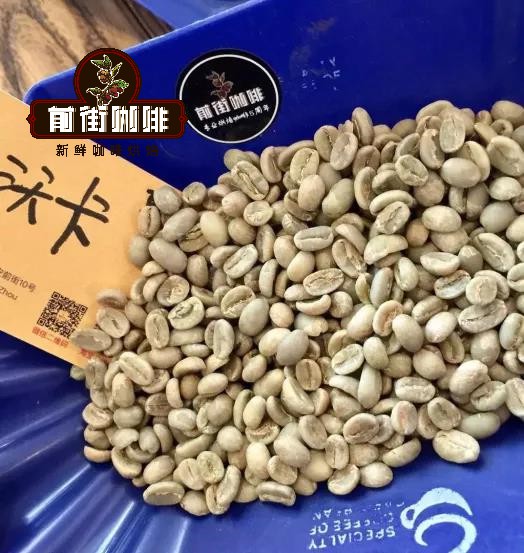
Country: Ethiopia
Producing area: Yega Xuefei
Altitude: 1650-1800m
Variety: native species
Treatment: washing treatment
Flavor: lemon, jasmine tea, black tea, sugar
Woka is located in the Yega Sheffield producing area, with an elevation of 1800mur2000 meters. The Waka Cooperative was founded in 2005 and joined the famous Yejia Sheffield Coffee Farmers Cooperative Union (YCFCU,Yirgacheffe Coffee Farmers Cooperative Union) that year, which is famous for producing high-quality sun Yega Coffee. This Waka on the front street comes from here.
Front street Essel Aricha
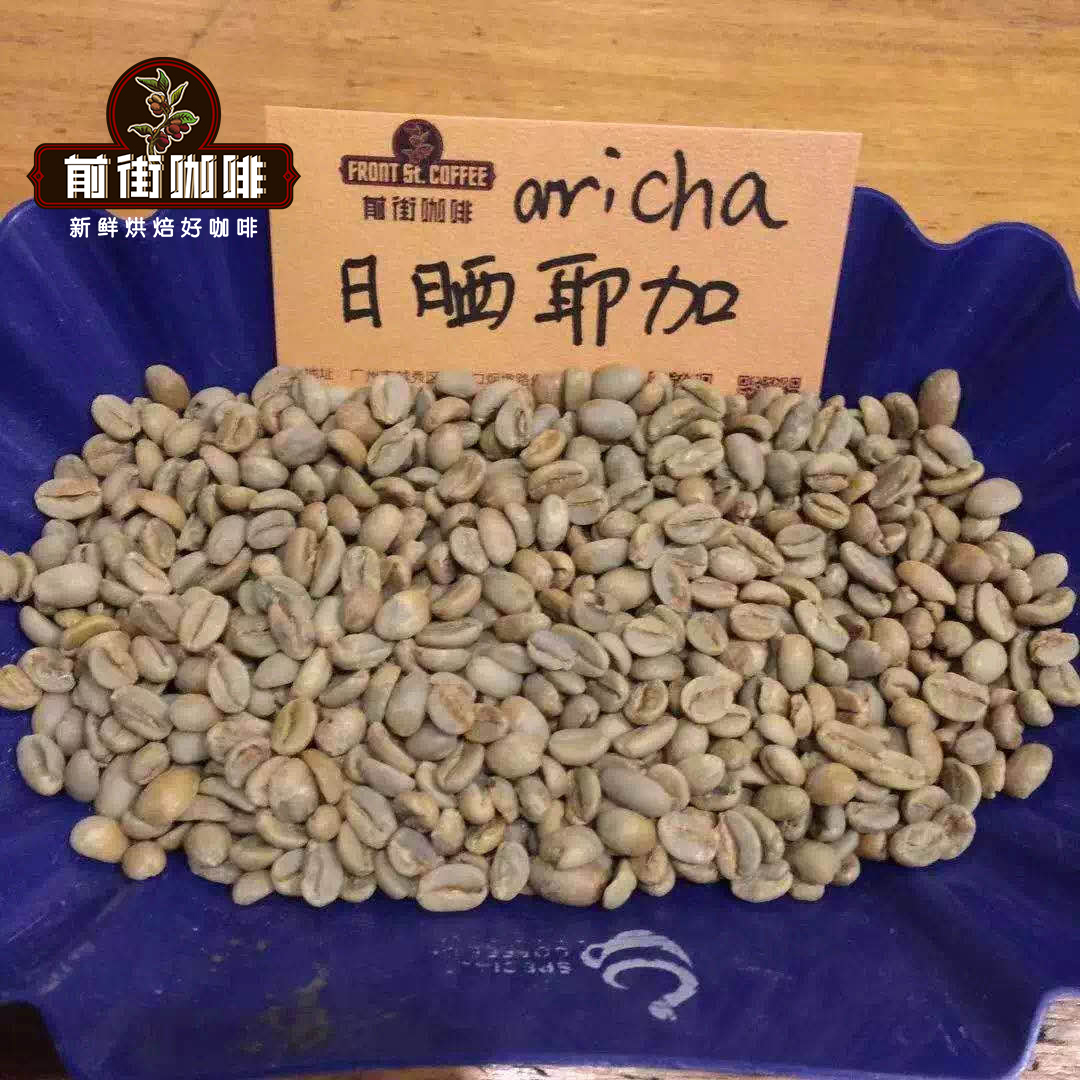
Country: Ethiopia
Producing area: Yega Xuefei
Altitude: 1900-2100m
Variety: native species
Treatment: sun treatment
Flavor: light fermented wine, sweet orange, spices, honey sweet
Aricha is produced at the Kebel Aricha processing plant, and there are about 650,700 small coffee farmers nearby. Farmers send ripe coffee berries here for processing and cash. After the treatment plant selects the available berries, they are directly exposed to the sun on the scaffolding and are turned every 2-3 hours in the first few days to prevent overfermentation. After four to six weeks of sun exposure, the workers will scrape off the outer pulp with a machine according to the weather and temperature, and then transport it to addis for storage. Usually, sun-treated beans are stored in the form of shell beans, and they are not shelled until they are exported to ensure the quality of raw beans.
Qianjie Sun Riga is the highest grade rated by ECX as G1, from raw bean appearance, consistency and freshness to dry aroma and flavor. Coffee fans who like bright acidity and strong berry flavor must not miss it!
The front street, Essex, Damo, Sakuran.
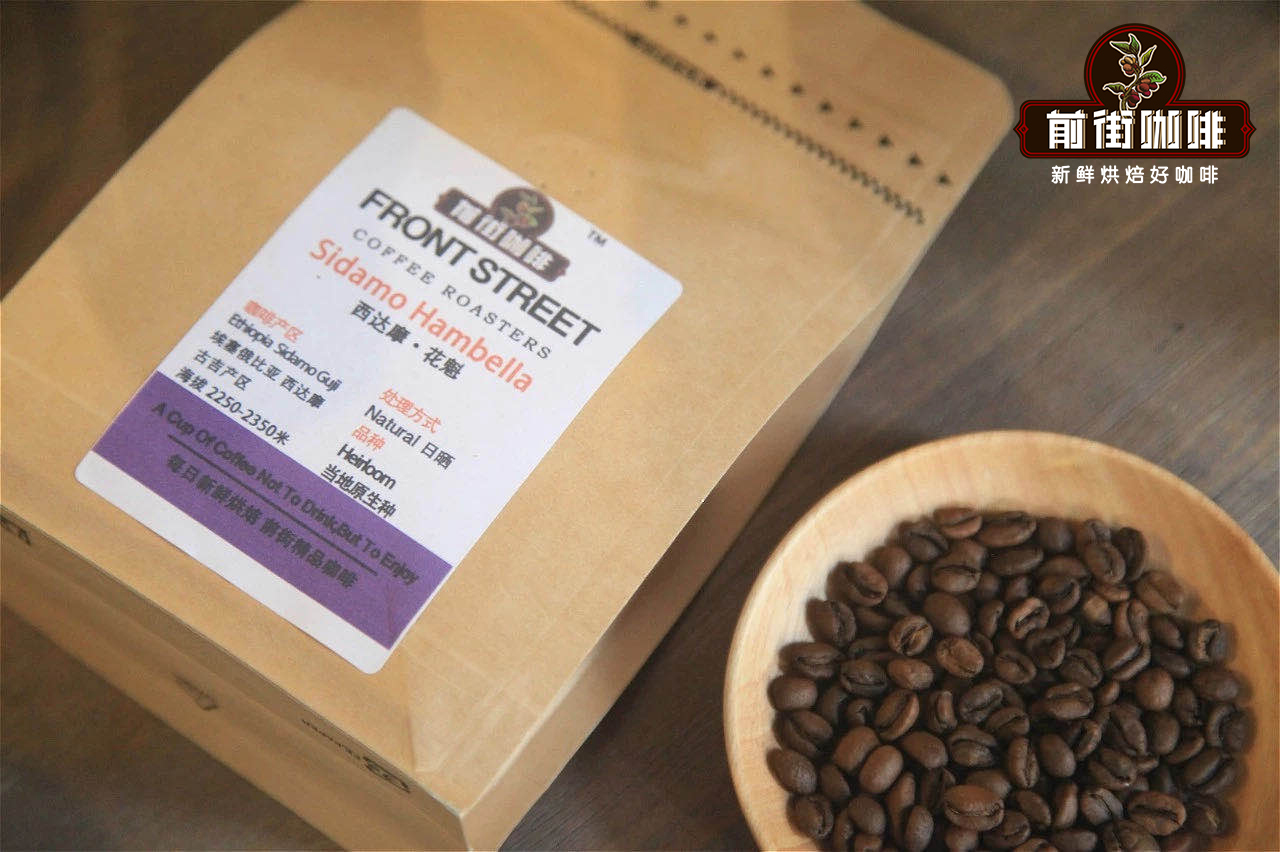
Country: Ethiopia Fiscal year: 2003
Production area: Sidamo
Altitude: 2250-2350m
Breed: Native species
Treatment method: sun treatment
Flavors: Berry, Scented Tea, Honey, Lemon, Black Tea
The flower is called flower because in 2017, Ethiopia's DW Green Bean Company sent their coffee beans to the TOH (the Taste Of Harvest) competition sponsored by the African Coffee Association, and the sun batch won the TOH Ethiopia championship at one stroke. This batch of raw beans, in order to champion identity, named "flower chief."
Huakui, located in Hambella, Hambella, Ethiopia's largest coffee-producing area (GUJI), administratively affiliated to the state of Olomia. Hambella faces Yejia Shefei kochore in the west, connects with shakiso, Uraga and Kercha sub-producing areas of Guji in the east, south and north respectively, and is the coffee sub-producing area with the highest altitude in Ethiopia (Harrar is the main producing area with the highest altitude in Ethiopia)
Front Street Ethiopia 90+ Candles
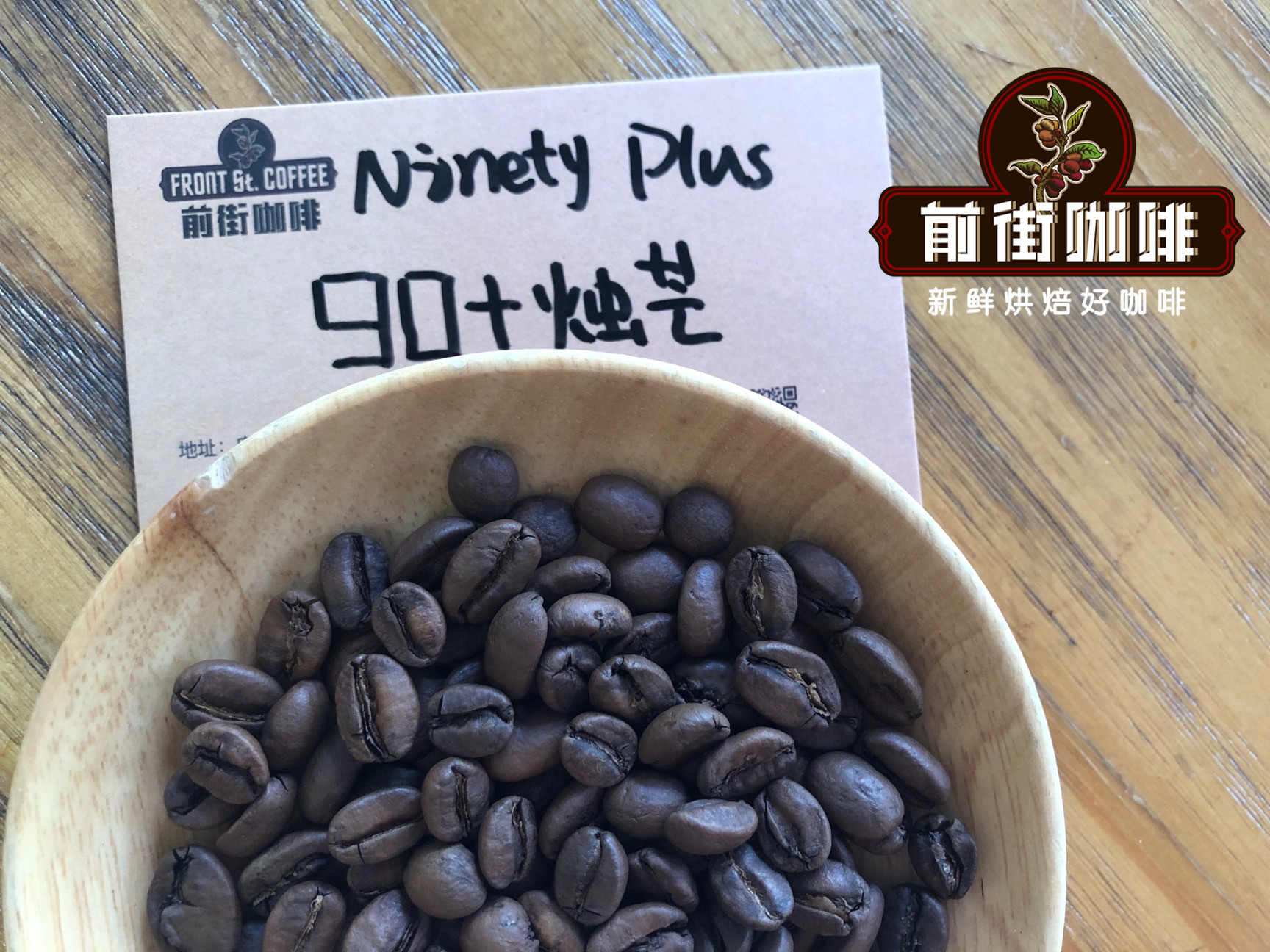
Country: Ethiopia
Producing area: Ethiopia
Altitude: 1750-2000m
Variety: native species
Treatment: sun treatment
Flavor: nectarine, tropical fruit, cream, mango, citrus
Ninety + Candle Coffee Bean Story, Drima Zede means "Best Approach" in the local dialect. According to the information provided by the original factory, this Yega Xuefei is a tailor-made product line based on 90 + years of experience. With the support of 90 + technology, Drima Zede only selects the most mature coffee cherries by hand, and the sun drying process takes pains to keep stirring to ensure uniformity. The end result is a very transparent and pure taste, hot and cold varies greatly, and the aromas of fruit, flowers and oak are very attractive.
90 + refers to a top coffee series with 13 flavors. 90 + is the pursuit of the ultimate flavor, which is very admirable.
The Qianjie 90 + candle will taste like nectarine, mango and cream. Qianjie believes that coffee fans who like mango will also love this 90 + candle.
Front street Essex excellent Cup 22
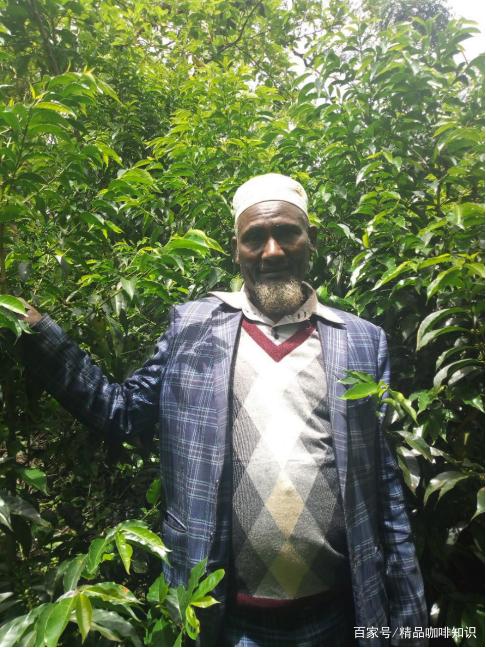
Country: Ethiopia
Producing area: Sidamo
Altitude: 2200m
Variety: iron pickup
Treatment method: solarization treatment
Flavor: citrus, honey, litchi, honey, cream, fermented wine, mango, strawberry
In the first Ethiopian Zhuo Cup COE, Qianjie Coffee shot the 22nd place coffee beans.
The bean comes from Adem Baneta Sulte, a 60-year-old father of 28 children (12 girls). When he heard about his results in the winning Cup, he was very happy. His coffee scored 87.64 points, ranking 22nd.
"he produced 4500 kilograms of coffee on his 6 hectares of land and sold it to local businessmen," Adem said. "I have never set foot in the export market because I don't have a chance, and this competition may lead me to the global market. This is a great hope for me and my family. "
In front of the street, Esse washed Yega.
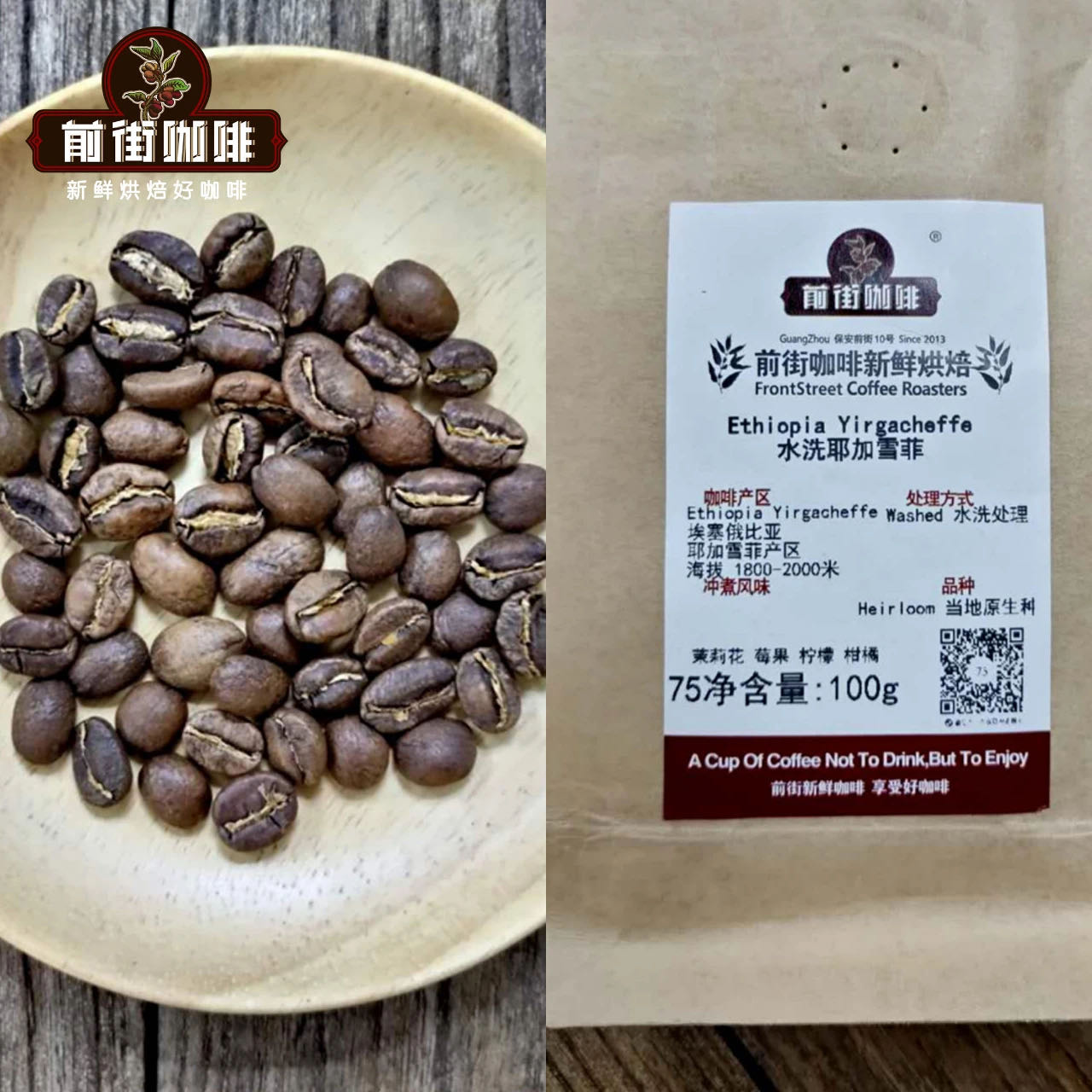
Country: Ethiopia
Producing area: Yega Xuefei
Altitude: 1600-2500m
Variety: native species
Treatment: washing treatment
Flavor: Jasmine, orange, berry, lemon, caramel
Yirgacheffe is a small town in Ethiopia. Because of its unique climatic conditions, it has created a boutique of coffee, so the local coffee beans are named after the town, and it is also synonymous with fine coffee beans.
Coffee beans, also from Yega Xuefei, have their own flavors of sun treatment and water washing treatment.
Under the same treatment, sun beans will take away the obvious dry aroma of red wine, while washed beans are citrus honey fruit aromas.
The first taste of both will have obvious acidity, similar to lemon and citrus fruits, but sun beans are more mellow.
Qianjie thinks that the acidity of the washing treatment will be brighter, like citric acid, the taste will be more delicate, the citrus flavor will be more obvious; the sun will be more mellow, the bitter taste will be heavier, and the taste will be much stronger.
Qianjie Esseri Xia Cun Jinbiao
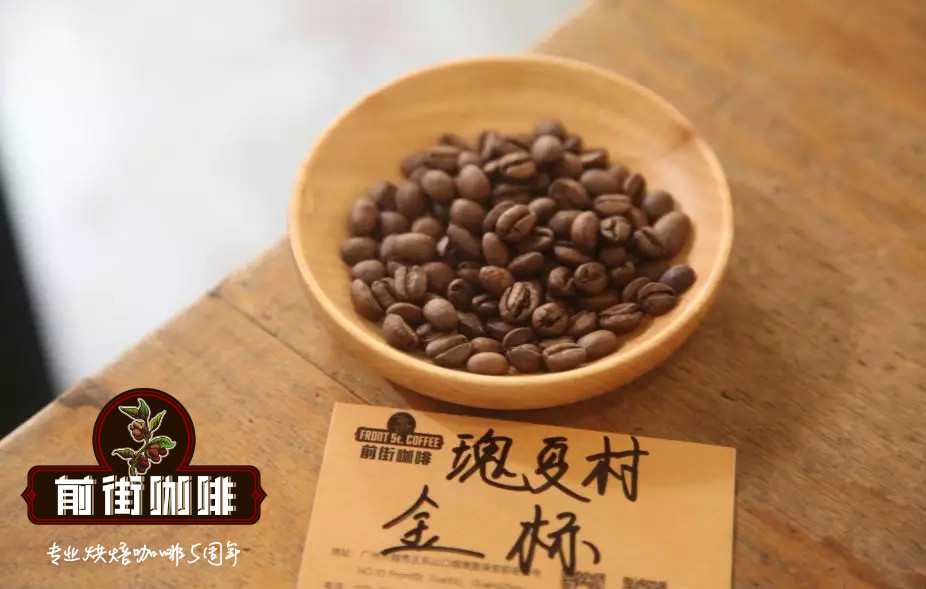
Country: Ethiopia
Producing area: Banchi Maggie
Altitude: 1909-2069m
Variety: Rose summer
Treatment: sun treatment
Flavor: citrus, lemon, tropical fruit, cream, nuts, tea
According to Qianjie, GeishaVillage Coffee Estate is completely different from most Ethiopian farms.
It is not a small farm, but a 500-hectare farm with its own washing plant and laboratory, located in the southwest near the border with Sudan, and what is most special is that the whole farm only grows rose varieties. It is not generally impossible to determine the exact varieties of Ethiopian native species. Rosa Village divides the farm into eight blocks, with three main Rosa varieties, whose seeds are collected from nearby forests, not from Panama.
The terrain in the west of the estate is relatively high, and the elevation of the SHEWA-JIBABU plot is slightly higher, while the shading ratio in the south is relatively higher, and the sun exposure in the north is longer. In the eight plots of the manor, the manor managers choose the most suitable variety for each plot according to the microclimate differences such as elevation, soil conditions and shading conditions, so as to ensure that each plot can form distinct characteristics.
The coffee grades of Ruoxia Village are as follows: competitive bidding, gold bid, red bid, green bid, CHAKA. This one on Qianjie is the gold standard.
Gold standard batches account for only 5% of the annual output of Ruoxia Village, and the batches usually selected by competitors around the world will also be purchased by bakers with high quality requirements, with complete traceability, outstanding flavor and high complexity of each batch. it is the best grade of the manor second only to competitive bidding.
Red sign of Esselia Village, Qianjie
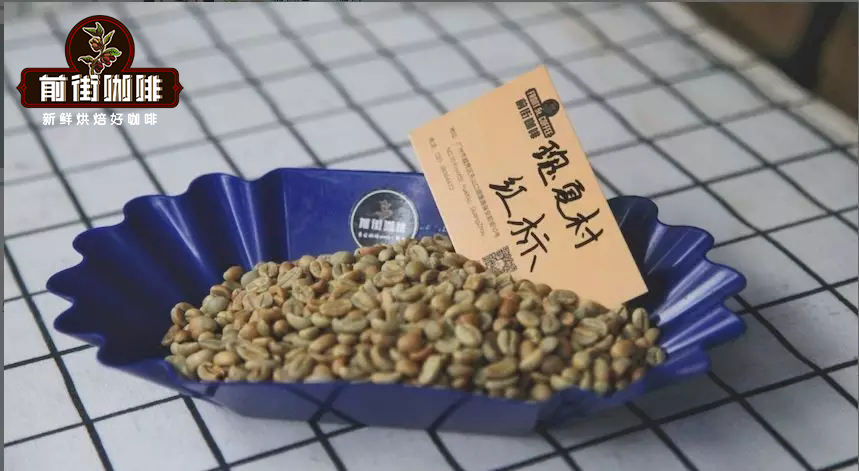
Country: Ethiopia
Producing area: Banchi Maggie
Altitude: 1909-2069m
Variety: Rose summer
Treatment: sun treatment
Flavor: tropical fruit, cream, bergamot, fermented wine, lemon, nuts
Compared with the gold standard batch Rose Xia Village mentioned in the front street above, the red mark batch is a complete traceability batch with a typical flavor of Rose Xia Village, and its flavor intensity and complexity are slightly weaker than that of the Gold Standard batch. It is a single product batch with very high performance-to-price ratio.
Chaka, Essex Xia Village, Qianjie
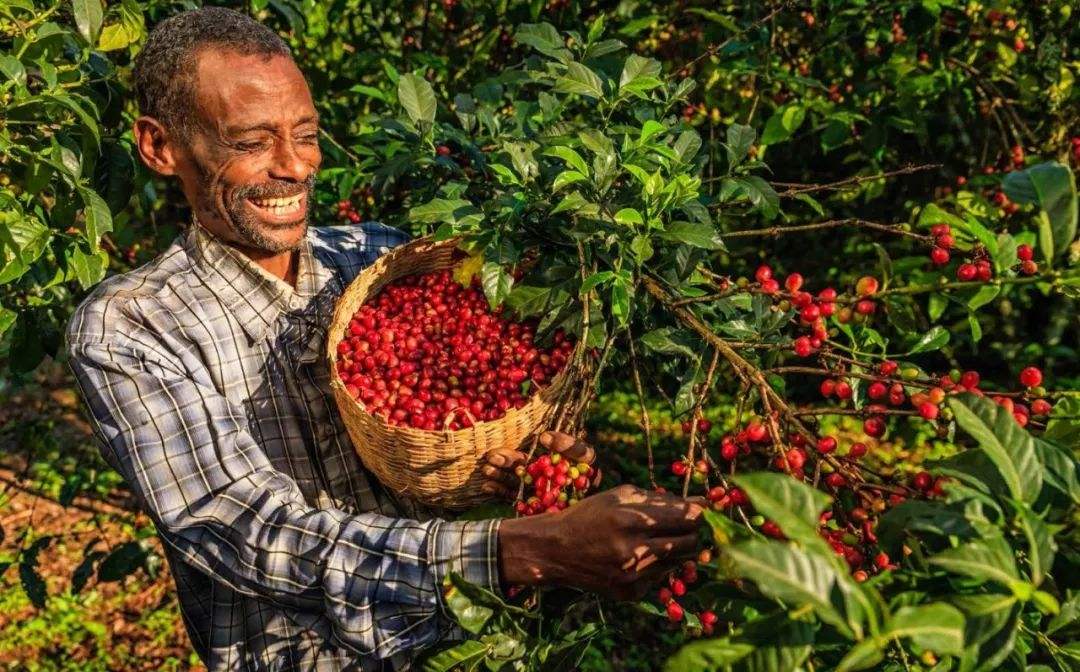
Country: Ethiopia
Producing area: Banchi Maggie
Altitude: 1909-2069m
Variety: Rose summer
Treatment: washing treatment
Flavor: strawberry, citrus, floral, tropical fruit
According to Qianjie, Chaka batches in Rosa Village are mixed with coffee from all the plots of the manor and throughout the production season. Chaka contains three coffee varieties in the Rosa Village Garden, namely, Rosa 1931, Gori Rose and illubabor.
After the Qianjie Cup test card smells with a touch of fermentation fragrance, taste will have citrus, grapefruit sour tone, with cream, chocolate, caramel flavor, soft flavor. Friends who like coffee fans might as well give it a try.
Here are all the Burundian coffee in front of the street.
two。 Burundi
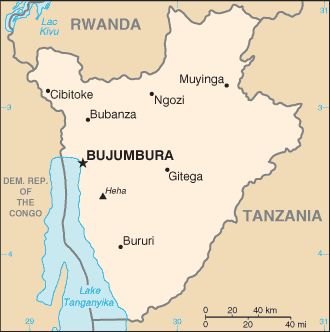
Burundi is a very beautiful landlocked country, located on top of the steep East African Rift Valley with complex terrain, while the magnificent ridge on the east bank of Lake Tanganyike is the watershed between the Nile River system and the Congo River system of Africa's two major rivers, known as the "Heart of Africa".
The pattern of coffee production in Bloomberg is similar to that in Ethiopia, mainly from small farmers, who send their harvested ripe berries to the treatment plant for unified treatment.
For example, the producing area of Reuters Town is a cooperative organized by small family coffee farmers. There are 539 small coffee farmers' families, of which 148 are women. On average, each family grows 10,200 coffee trees (at least 1000 coffee trees per hectare), which shows that its annual income is weak and it is also a typical poor small coffee farmer family.
Generally speaking, Burundian coffee is mainly bourbon, with other variants (such as Jackson and Blue Mountain), which are grown from 700m to 2700 m above sea level, which produce brighter acidity and lemon flavours, while flavors such as passion fruit, pineapple, flower and honey, can reach above SCA 86 points, while coffee at lower altitudes has a thinner texture and more chocolate and hazelnut flavors.
Front Street, Burundian Heart of Africa.
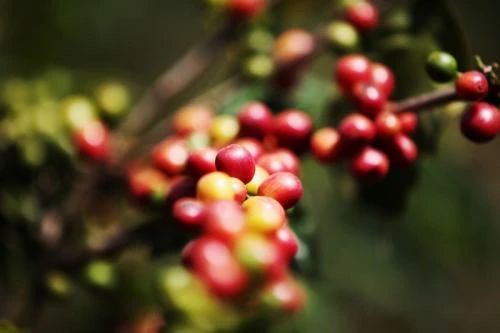
Country: Burundi
Production area: Bubanza
Altitude: 1400-1700m
Variety: bourbon
Treatment: water washing
Flavor: kumquat, lemon, dried fruit, caramel, light acid
According to Qianjie, the origin of Heart of Africa is that according to the statistics of the World Bank in 2011, about 600000-800000 families in Burundi depend on coffee for their livelihood, and coffee is the core of Burundi.
The "Heart of Africa" in Burundi was introduced by the Belgians. Burundi began to grow coffee in 1930. The varieties are mostly bourbon varieties like neighboring Rwanda, and coffee grows on mountains ranging from 1750 to 2000 meters above sea level.
3. Kenya
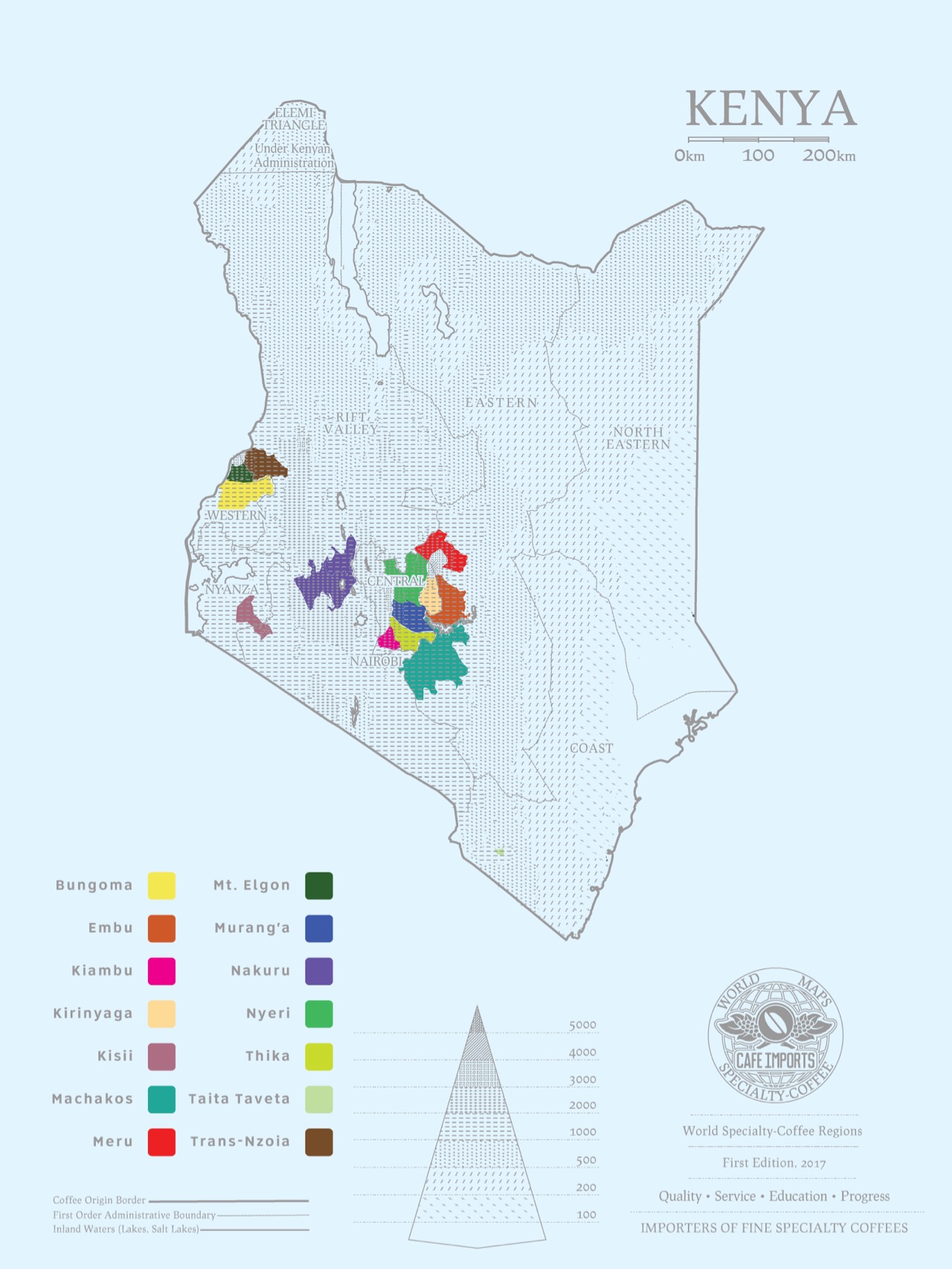
Kenyan coffee is mostly grown at an altitude of 1500m, 2100m, and is harvested twice a year. Its main feature is a distinct fruit aroma, the common fruit aroma is citrus. Kenyan coffee has a multi-layered taste and juice acidity, perfect grapefruit and wine flavor, moderate mellow, is the favorite of many people in the coffee industry. Kenyan Coffee became more famous with the sensation of the Hollywood movie OutofAfrica.
According to Qianjie Coffee, it is illegal to cut down or destroy coffee trees in Kenya. The buyers of Kenyan coffee are world-class high-quality coffee buyers, of course, Qianjie knows that no country can grow, produce and sell coffee as continuously as Kenya.
All coffee beans in Kenya are first acquired by the Kenya Coffee Commission (CoffeeBoardofKenya, or CBK), where they are identified, rated, and then sold at weekly auctions, which are no longer graded.
The Kenya Coffee Commission only acts as an agent to collect coffee samples and distribute them to buyers so that they can determine the price and quality. The auction in Nairobi is for private exporters, and the Kenya Coffee Commission pays growers a price below the market price. The best coffee grade is bean berry coffee (PB), followed by AA++, AA+, AA, AB and so on.
Generally speaking, the first-class coffee is bright, delicious and slightly alcoholic, and the auction is also organized to meet the needs of dispensers. This kind of auction usually has a small auction volume (3-6 tons each), with samples with the grower's logo for buyers to enjoy. After the auction, the exporters pack according to different flavors, different qualities and the quantity required by the blenders. This provides a great deal of flexibility for the dispatcher. Quality-conscious Germans and Scandinavians are long-term buyers of Kenyan coffee.
And according to Qianjie, there are two types of coffee farms in Kenya, one is a large planting farm covering an area of more than five acres, but the average elevation is low, as far as Kenyan coffee is concerned, the coffee bean quality of the big farm is only medium. The best Kenyan beans come from small farms, most of which are located in the foothills or volcanic slopes above 5,000 to 6,000 feet. Each small farmer has a capacity of only 20 to 70 bags per season and cannot afford to invest in expensive washing plants, but small farmers are very United. Hundreds or thousands of households are gathered to set up a cooperative farm, which is funded by the government to build a washing treatment plant, and the coffee fruits picked by small farmers are sent to the cooperative farm for unified processing. First remove the half-ripe or rotten fruit, then peel, ferment, decompose the flesh, remove the coffee beans, then dry and polish, the whole process is supervised by the official Coffee Administration, which ensures the quality of Kenyan coffee. Therefore, the washing processing technology and high standard quality control of Kenyan beans have always been an example of bean-producing countries.
Kenya (Kenya) coffee flavor has its unique bitterness and alcoholic taste, is also the most praised. The coffee beans it grows are also high-quality Arabica varieties. The size of beans is medium-large, very thick and delicious, and the acidity is moderate. In most producing areas, there is the aroma of small tomatoes, which is the most important feature of Kenya.
Here are all the Kenyan coffee in front of the street.
Front Street Sassini, Kenya
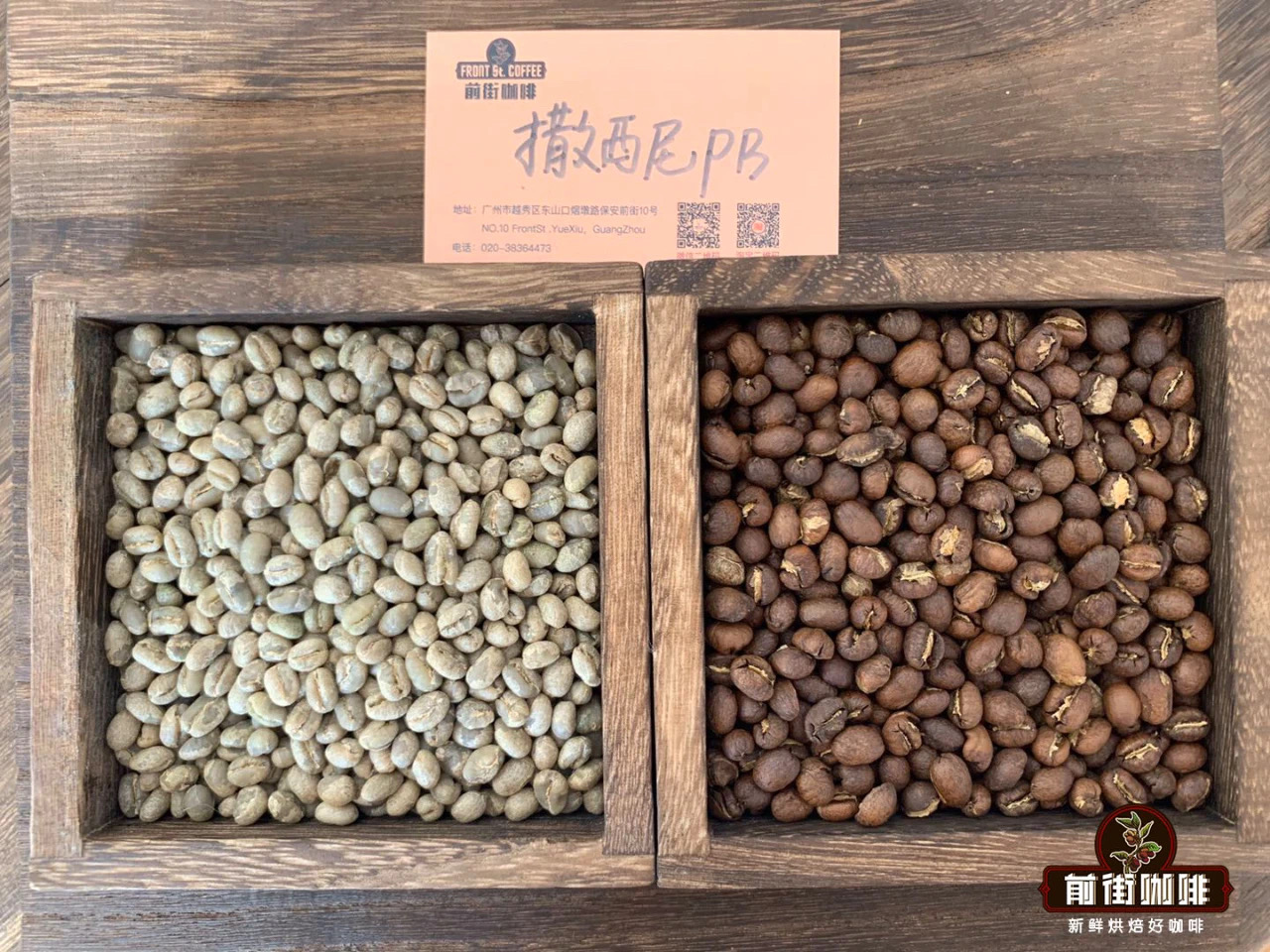
Country: Kenya
Origin: Sasini
Altitude: 1900m
Breed: SL28, SL24,riuru
Treatment method: washing treatment
Flavor: Tomato, fruit, berry
Sasini Manor is located in the KIAMBU area around Mountain Kenya, about 1800 meters above sea level. It has beautiful scenery, pleasant climate, sufficient light and excellent soil conditions. It belongs to fertile acid red soil, loose soil, deep soil layer and good drainage. PH value is between 5.5 and-6.5.
Sasini Limited was originally established in 1952 and was one of the first coffee and tea companies established after Kenya's independence. It has obtained many certifications such as UTZ, Rainforest Alliance and Kenya Bureau of Standards Diamond mark.
And Front Street believes that good quality Kenyan coffee has a bright acidity and an intoxicating fruity aroma. The sweet and sour amplitude is large, the aftertaste is refreshing and sweet, and there is a trace of blackcurrant aftertaste.
Front Street Kenya Azalia
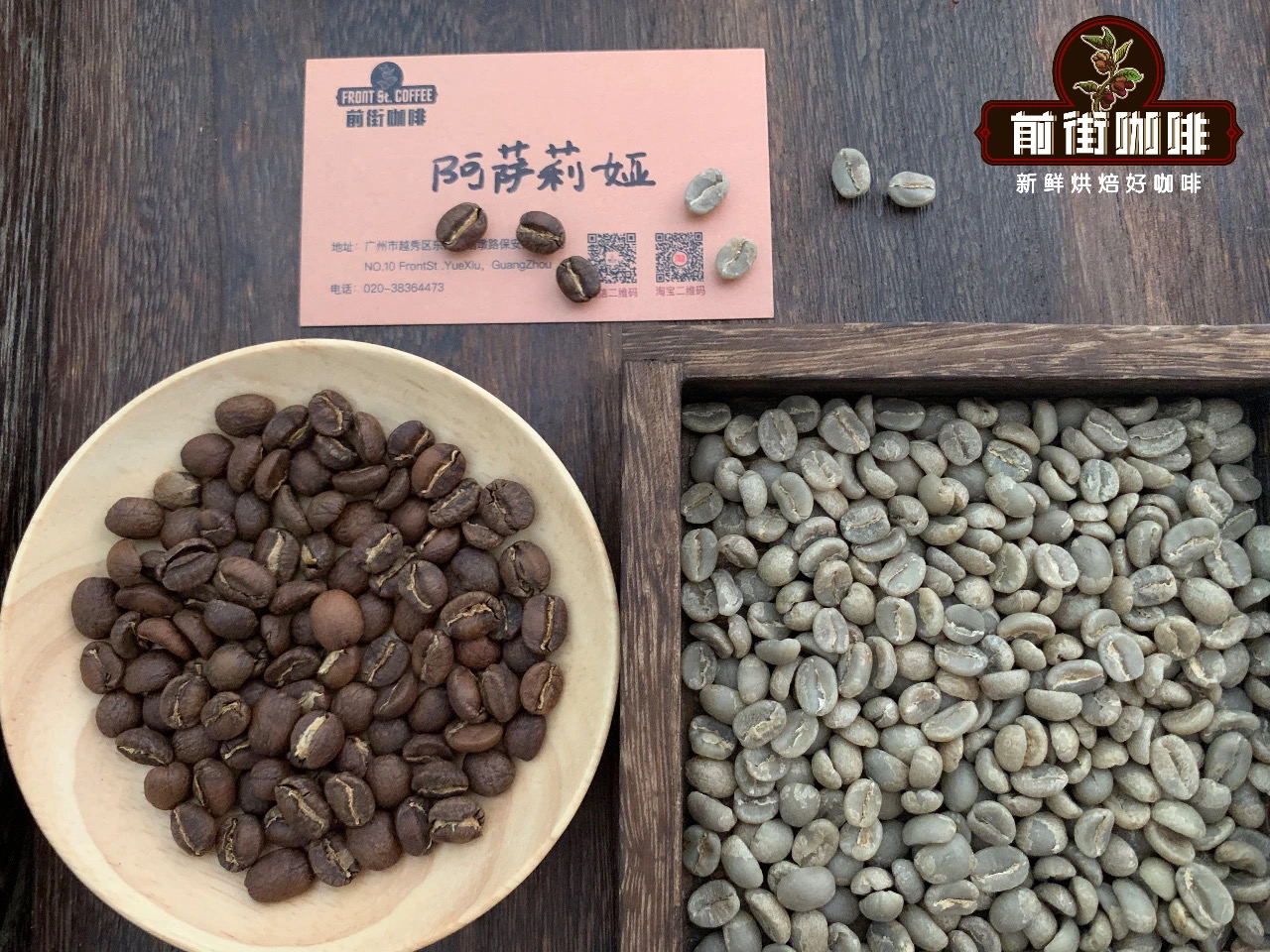
Country: Kenya
Production area: Asali (Honey processing Plant)
Altitude: 1550-1750m
Variety: SL28,SL34
Treatment: washing treatment
Flavor: Sydney, black plum, brown sugar, virgin fruit, Brin
As far as Front Street knows, SL-28 and SL-34 are owned by Guy of Scott Laboratories. Guy Gibson led the research project to produce two of the 40 experimental varieties, while the bourbon variants (SL-28) and (SL-34) have always been the winners of the expert cup test Narobi auction.
4. Rwanda
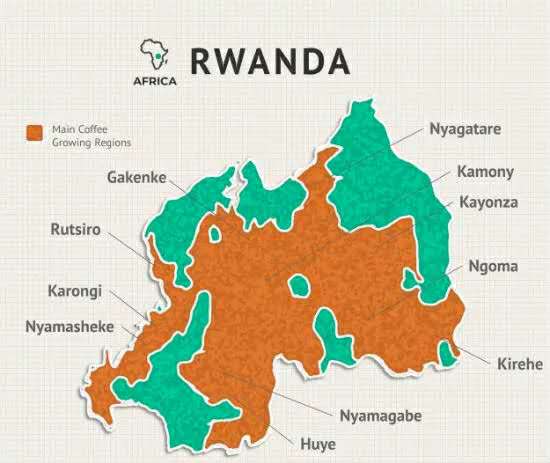
Rwanda, located in the central African region, is a standard landlocked country, and its neighboring countries are all big coffee producers. At the beginning of the 20th century, Rwanda was successively colonized by Germany and Belgium, and German missionaries were the first to introduce coffee. Coffee production increased significantly during the colonial period, but the exploitation of labor, suppression of the prices of coffee crops and high export taxes made the quality of coffee beans not ideal, which was also a normal phenomenon in the development of commercial coffee at that time. Qianjie Coffee was also found in Brazil, which also experienced colonial rule, and the coffee beans once produced were heavy in quantity rather than quality, resulting in a reputation for poor coffee quality for some time.
It was not until the independence of Rwanda and the establishment of the first official coffee organization, OCIR, that coffee bean production was gradually valued. Coffee production in Rwanda continued to grow from the 1960s to 1980s and reached an unprecedented peak in 1986, until the beginning of domestic political instability (the Rwandan genocide) in the early 1990s. Qianjie Coffee has also recently collected several batches of Rwandan coffee beans from different producing areas, one is the rapid development of the Rwandan coffee industry and the guarantee of coffee quality, and the other is that Rwanda has gradually formed an obvious flavor of the producing areas, which is different from Ethiopia and Kenya.
Rwanda was a German colony at the beginning of the 20th century. Coffee was first introduced by German missionaries in 1904 and coffee production increased significantly around 1930. Rwanda was the ninth largest exporter of Arabica coffee in Africa, with nearly 450000 small farmers, with an average planting area of less than 1 hectare (about 28000 hectares per coffee farmer). Coffee production areas are mainly distributed in the western half of the country and the central region near the capital Kigali Kigali.
In 2000, in Rwanda, which had just experienced internal chaos, the United States Agency for International Development (USAID) funded two major coffee development projects, PEARL and SPREAD, aimed at supporting the reconstruction of Rwanda. Since the implementation of the plan 46 coffee washing plants have been built in Rwanda allowing Rwanda's economy to grow significantly under the strong export of coffee beans.
Therefore, at present, Rwandan coffee beans are mainly treated by water washing. Hand-select ripe coffee fruit, remove the peel and pulp, wash and ferment for 12-18 hours, wash the pectin, and finally dry to less than 14% moisture content. Qianjie Coffee believes that at the beginning of the development of Rwandan coffee beans, it was determined that washing as the main treatment method is the choice to clearly highlight the flavor of coffee. Because washing is the treatment method that can best reflect the essential flavor of coffee, Qianjie coffee will first recommend washed coffee beans to guests when recommending a coffee producing area, so that we can clearly understand the flavor characteristics of the producing area.
In the annual competition of Top Coffee held by the American Fine Coffee Association SCAA in 2008, Rwanda Aromec Arnolmega top washed bourbon beans beat the Blue Mountain No.1 of Jamaica and Mantenin G1 of Sumatra to win the 2008 COE Championship Award, thus expanding its fame and price in the coffee industry.
Qianjie Gesak, Rwanda
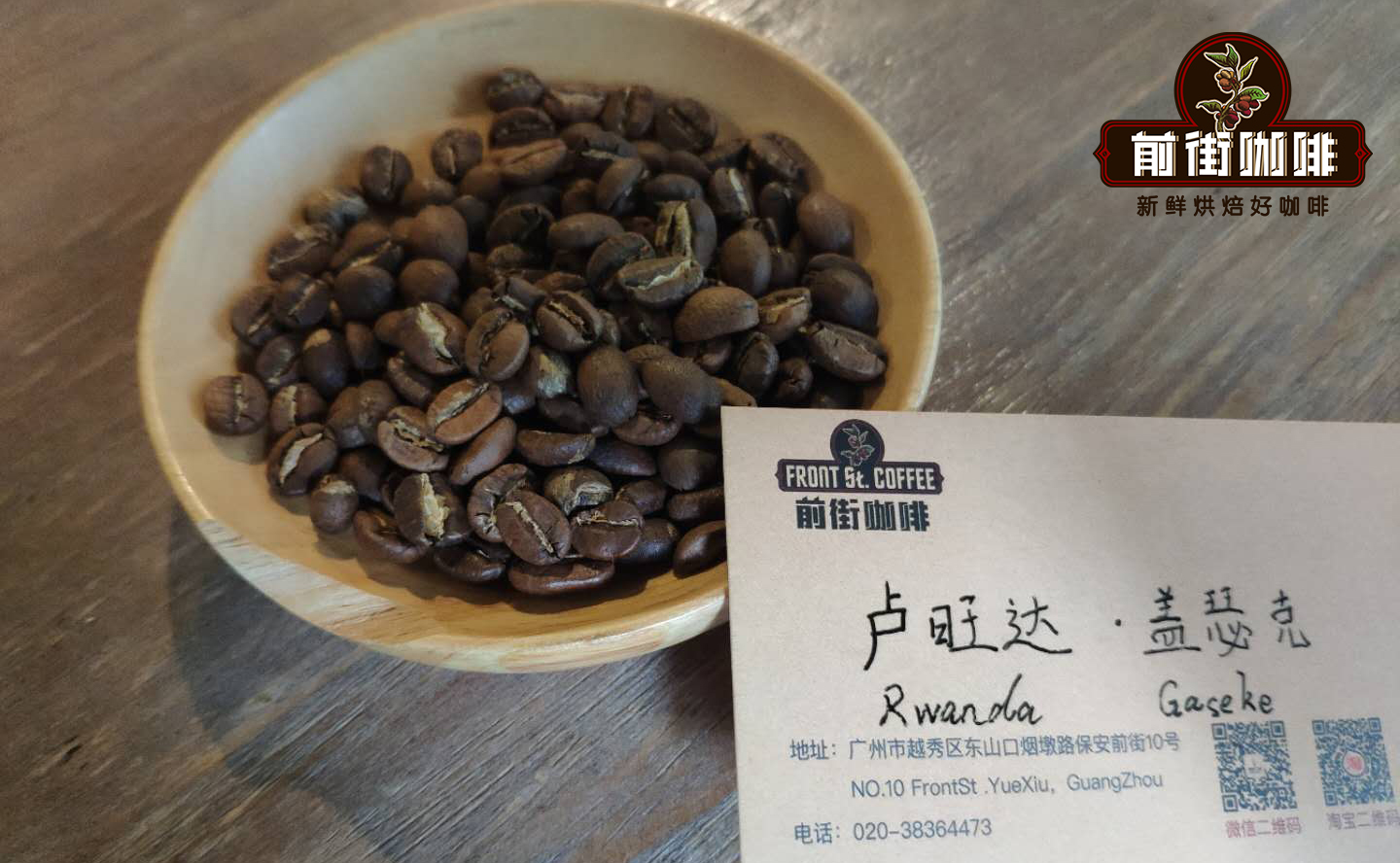
Country: Ethiopia
Production area: Nyamasheke
Altitude: 1500m
Variety: Kaddura, Kaduai, bourbon
Treatment: washing treatment
Flavor: citrus, berries, plums, nuts, honey, tea
The Gaisek water washing processing plant is located in the Nyamasheke district of western Rwanda.
According to Qianjie, Fidele Ndagijmana is a young trader in the Nyamasheke area who saw the development potential of fine washed coffee in Rwanda, so he applied to the government to build this processing plant and successfully produced 170t coffee berries in the first year. This is because he used the off-season to improve and expand the production equipment, which can provide better production machines and better storage environment when the next harvest season comes. In the end, the excellent trader won himself more land near the processing plant to grow. Then the Gaisek washing processing plant became famous for it.
5. Tanzania
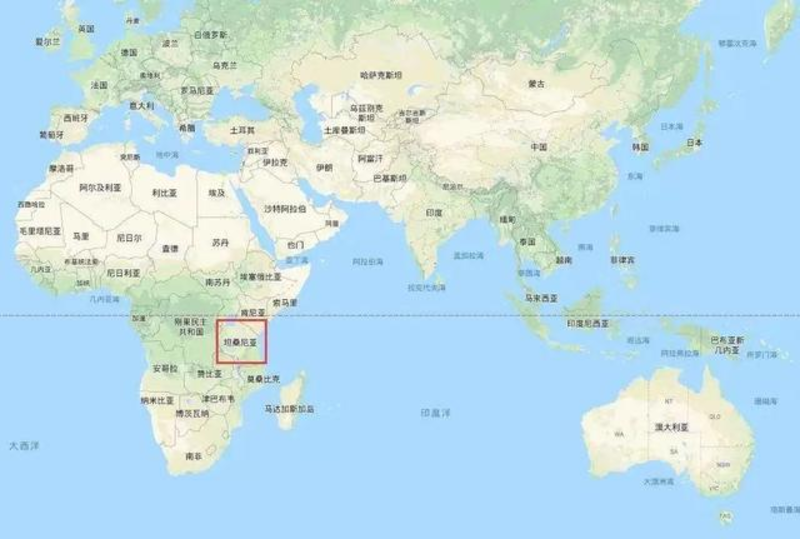
Mount Mt Kilimanjaro, Africa's highest peak, stands in northeastern Tanzania, known as Trusteeship after World War I. it was colonized by Britain and became independent in 1964.
The uniqueness of Tanzanian coffee is a combination of three different plantations in northern Tanzania. One of the plantations is located in the Kilimanjaro Mountains, the highest peak in Africa and the largest independent foothills on earth. Coffee
Grows between 1150 and 1500 meters above sea level.
In 1898, bourbon coffee was introduced to the Kilimanjaro region of Tanzania by Catholic priests. Then the Kent species was introduced in 1920, and so far there are kent and bourbon species in Tanzania. According to Qianjie, it is known that the bourbon fruit is short and round, and the density of pulp and seeds is very high. So bourbon coffee usually has high sweetness and bright acidity. The yield of this coffee is 20-30% higher than that of iron pickup, but it is still considered a low-yield bean seed because it is also vulnerable to rust leaf disease.
And Tanzania coffee beans also have a grading system, its grading system is the same as Kenya, according to the size of beans, there are AA, AB, PB and so on.
Qianjie Kilimanjaro, Tanzania
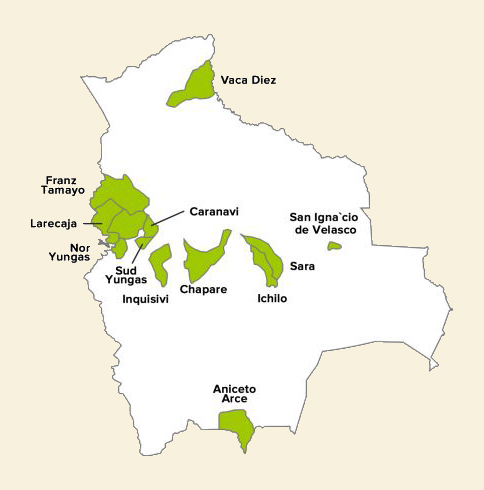
Country: Tanzania
Producing area: Mount Kilimanjaro
Altitude: 1300-2000m
Variety: bourbon
Treatment: washing treatment
Flavor: citrus, berries, honey, tea
According to Qianjie, Kilimanjaro coffee (Kilimanjaro Coffee) is produced in Mount Kilimanjaro, the highest mountain in Africa in northeastern Tanzania. Its coffee is of good quality, rich aroma and outstanding sour taste, so it is suitable for the preparation of comprehensive coffee.
Kilimanjaro coffee is an important lifeline of the Tanzanian economy. About 17% of the foreign exchange is generated by coffee. It is mainly produced around MountKilimanjaro near Arusha in the northeast, that is, Mount Kilimanjaro, the highest peak in Africa with perennial snow. Kilimanjaro coffee, one of the top representatives of Tanzania's AA coffee beans, is bred by volcanic ash and made by nature. The coffee has a unique cocoa fruit aroma and a strong glycolic degree.
6. Bolivia
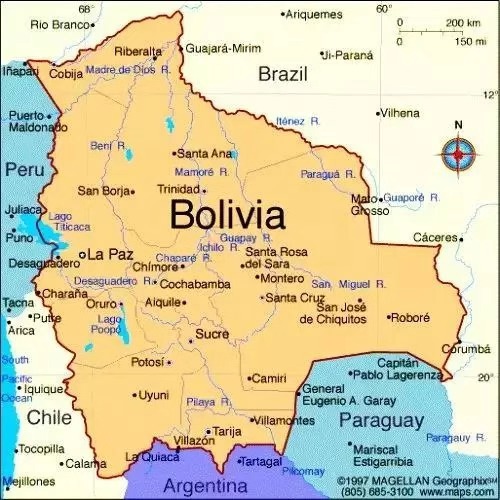
Bolivia is a landlocked country in South America, bordering Brazil and Colombia. La Paz, the capital of Bolivia, is the highest capital in the world at an altitude of more than 3,600 meters.
Bolivia is therefore also the poorest coffee-producing country in the world, even poorer than Ethiopia. Apart from the lack of ports, the high level of corruption in local government is also the reason why the country is poor.
However, the origin of Bolivian coffee can be traced back to 1880, when all production was basically related to the owners of some large farms north of La Paz. In 1991, the government promoted a plan to invest indigenous people in growing Bolivian coffee, but did not pay attention to quality.
For Bolivian coffee farmers, the main problem has always been their difficulty in earning enough money to support long-term coffee cultivation. To supplement the coffee deficit, they must grow other crops, mainly coca leaf, which can be used to make cocaine. Coca cultivation is legal in Bolivia. Encouraged by the government, coca leaves are four times more profitable than coffee and much easier to grow, causing many farmers to abandon coffee or even farms altogether.
However, coca cultivation requires the use of large amounts of chemical pesticides and fertilizers, which are extremely damaging to the soil. In other words, after a few years of coca cultivation, the soil becomes poor and no crops can be planted. In the early 2000s, the United States had strongly supported Bolivian agriculture, but coffee farmers suffered the most as relations with the United States deteriorated as the Bolivian government later supported coca cultivation. After Bolivia resumed a limited war on drugs, several programs were restarted to assist coffee farmers, such as COE (Cup of Excellence), which was held with the support of USAID.
But as if those blows weren't enough, in 2013 leaf rust arrived, and Bolivia lost 50 percent of its coffee production that year alone. The combination of government coca leaf policies and leaf rust has reduced Bolivia's coffee production by 70 per cent over the past decade, reducing it to a small coffee-producing country.
Bolivia's most famous production area is La Paz, which includes Caravani, Yungas and Inquisivi.
Bolivia's coffee production is dominated by smallholder production systems, with 23000 small farms ranging in size from 2 to 9 hectares. In particular, about 40% of Bolivia's coffee culture is mainly domestic. And Bolivia's cultivation is almost entirely organic.
Arabica is the main variety, such as iron pickup, kadura, kaduai and katim dominated.
Here are all the Bolivian coffees on Front Street today.
Front Street Bolivia Java
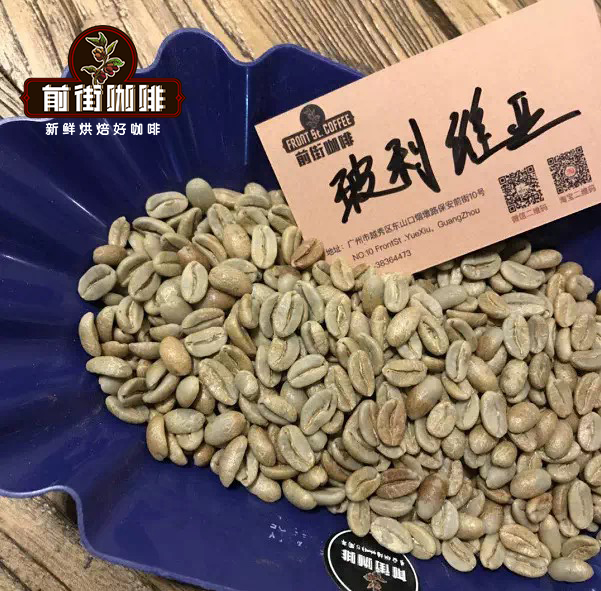
Country: Ethiopia
Producing area: la Paz
Altitude: 1600m
Variety: Java (java)
Treatment: cocoa sun treatment
Flavor: fermented, grapes, nuts, slight floral aroma, honey, cream
It is worth mentioning that Bolivia did not attach importance to coffee cultivation, resulting in a small quantity, but Qianjie Coffee specially selected this Java coffee bean from Waliki Manor, on the one hand, because of the particularity of the variety of coffee beans. On the other hand, Qianjie Coffee saw the professionalism and importance of the manor.
During the harvest season, the manor will hire pickers from the Polinda community to carefully select coffee fruits during the picking period. These pickers are trained to pick only ripe coffee fruit, and the manor picks the coffee fruit in stages during the harvest season to ensure that the coffee fruit is picked at the best maturity. The manor uses crates to ensure that the coffee will not be damaged during transportation and to keep the coffee fruit well ventilated, thus preventing unnecessary early fermentation. After selection and weighing, the coffee fruit is washed carefully, dried on a raised African bed, and then turned every hour. About a week later, put the coffee fruit in the cocoa dryer.
Qianjie Coffee found that the chateau used cocoa dryers for the treatment of coffee beans. The Rodriguez family has been innovating and experimenting with different treatment techniques, and found that cocoa dryers can slowly and continuously dry coffee beans at low temperatures, thereby reducing the impact of weather conditions. Coffee beans are placed in large steel buckets for about 35 hours at a temperature of no more than 40 degrees Celsius, flipping every 30 minutes. After drying, the coffee beans are transported to La Paz for rest, and then shelled at La Luna, a drying plant in Agricafe. In this factory, machinery is used for careful shelling and sorting of coffee, in addition to manual sorting under ultraviolet and natural light.
Waliki Manor covers an area of 3.62ha and is 1600 meters above sea level. This high altitude helps to ensure the slow ripening of coffee fruit. This slow ripening process leads to an increase in the concentration of sugar in the coffee fruit, which helps the coffee become sweeter.
The origin of the Java variety, Qianjie told coffee fans that this Bolivian Waliki manor coffee bean variety is Java Java.
The local long bean variety in Bolivia gets its name because of its long appearance. Its official name should be Java. Java is a very interesting bean species, which is strongly related to Indonesia.
But in fact, Java was originally a coffee tree species born in the primeval forest of Ethiopia, collected by local ethnic groups, and then spread to Indonesia through Yemen, where it was named Java.
It was generally believed that Java was a variety of Tibica, but genetic comparisons revealed that Java was actually a coffee variety Abysinia from Ethiopia.
After Indonesia, Java varieties spread first to the nearby Timor island group, and then to Cameroon in East Africa, where they were first released for farmers in 1980.
As for the spread to Central and South America, it was introduced to Costa Rica through CIRAD (the Centre de Coop é Internationale en Recherche Agronomique pour le D é veloppement) in 1991 under the guidance of breeding expert Benoit Bertrand. The first Central American country to formally recognize the Java variety was Panama.
Java has long fruits and seeds, brass buds, high plants but low yields. Because of its outstanding flavor, it has stronger resistance to leaf rust and coffee fruit disease, so it is very suitable for small farmers.
The above is the regional flavor and characteristics of African coffee cherries sorted out in Qianjie. I believe coffee fans will have a certain understanding of African coffee after reading this article, and it will be more convenient to choose the flavor of coffee in the future.
For more boutique coffee beans, please add private Qianjie coffee on Wechat. WeChat account: kaixinguoguo0925
Important Notice :
前街咖啡 FrontStreet Coffee has moved to new addredd:
FrontStreet Coffee Address: 315,Donghua East Road,GuangZhou
Tel:020 38364473
- Prev
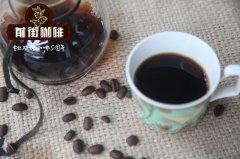
Get to know Central American Coffee-- an introduction to Costa Rica Coffee producing areas
For more information on coffee beans, please follow the Coffee Workshop (Wechat official account cafe_style) Central America is a land bridge connecting North and South America. There are seven countries, namely, Belize, Costa Rica, El Salvador, Guatemala, Honduras, Nicaragua and Panama. Coffee is produced in seven Central American countries, including Guatemala, Costa Rica and Acer.
- Next
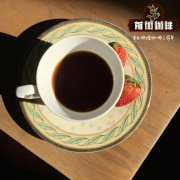
Best African Coffee Bean Name Archives Where do the best African coffee beans come from?
Professional coffee knowledge exchange More coffee bean information Please pay attention to coffee workshop (Weixin Official Accounts cafe_style) The best African coffee beans: bean name Ethiopia Kafa forest price HKD70/200g Origin/Manor Kafa forest production geographical environment 1700- 1900m processing method Sunlight taste special flower fragrance, cocoa, fruit aroma introduction from
Related
- Does Rose Summer choose Blue, Green or Red? Detailed explanation of Rose Summer Coffee plots and Classification in Panamanian Jade Manor
- What is the difference between the origin, producing area, processing plant, cooperative and manor of coffee beans?
- How fine does the espresso powder fit? how to grind the espresso?
- Sca coffee roasting degree color card coffee roasting degree 8 roasting color values what do you mean?
- The practice of lattes: how to make lattes at home
- Introduction to Indonesian Fine Coffee beans-- Java Coffee producing area of Indonesian Arabica Coffee
- How much will the flavor of light and medium roasted rose summer be expressed? What baking level is rose summer suitable for?
- Introduction to the characteristics of washing, sun-drying or wet-planing coffee commonly used in Mantenin, Indonesia
- Price characteristics of Arabica Coffee Bean Starbucks introduction to Manning Coffee Bean Taste producing area Variety Manor
- What is the authentic Yega flavor? What are the flavor characteristics of the really excellent Yejasuffi coffee beans?

